Road trips are awesome: Endless highways let you go anywhere and just about everywhere. From the oceans to the mountains, and every variation of flat farmland, rocky valley and scenic vista along the way, it can be all kinds of grand adventure.
Whether you’re planning on a few days, a few weeks or multiple months, the right gear can make or break a trip. What follows isn’t a list of gadgets, though there are a few. Instead, it’s a mix of easy-to-find items, some essential apps and services and a handful of tips that will make your trip go a lot smoother. It’s also mostly focused on the “road” part of “road trip,” though some of these will work just fine if you’re jetsetting. I hope you’ve got your camping and hiking gear sorted already, if that’s your thing.
And who am I to offer advice? A lover of road trips. Last year I did a 10-week, 10,000-mile road trip around the US. This year, a 9,900-mile adventure that hit nine national parks. Before that, I took multiple trips across and around the US, Europe, Australia and more. Yeah. I love road trips.
Understandably, there will be variations on what you need depending how long you’re going, where you’re going, your mode of travel and how many people are with you. I don’t expect everyone to drive for 10 weeks in a Miata, though if you have the chance, I’d highly recommend it.
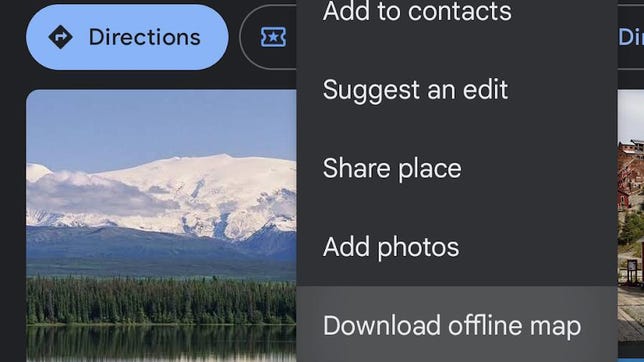
Geoffrey Morrison/CNET
I think it’s fair to say most of us take for granted that we’ll have mobile data wherever we go. Depending where your road trip takes you, you might not. If you stick to the interstates, you’re probably fine. But if you want to take some incredible two-lane backroads, perhaps not.
It’s easy to download Google Maps so you can still figure out where you’re going, even if you don’t have data. Simply search for where you’re going such as “Wrangell-St, Elias National Park.” Swipe up twice so the location info fills the screen. Tap the triple vertical dots in the upper right and select download offline map. Then select the area you’ll be covering on your drive.
GPS location info doesn’t require a data connection, only a reasonably clear view of the sky. As long as the maps are already loaded, you can navigate on roads and even from many trails.
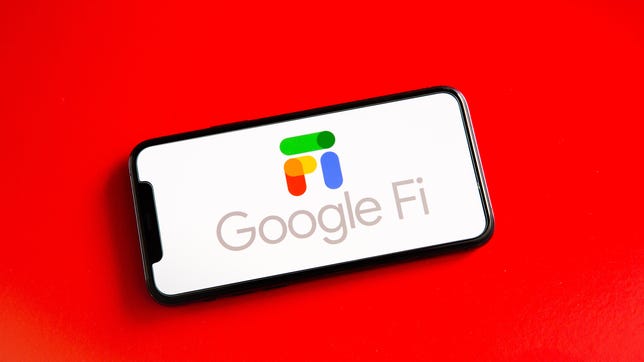
Sarah Tew/CNET
Consider an unlimited data upgrade
If you’re usually within Wi-Fi range, you probably don’t realize how quickly certain activities can eat up your data. Music, for instance, is only a fraction of the data required for video, but listening nonstop for six hours each day during a drive can quickly nuke your plan’s included data.
If your provider has an unlimited option, it’s worth considering. Some, like Google Fi, let you swap to an unlimited plan any month you want. I also like Google Fi because it has no international roaming in case your road trip is really epic. Check your current provider if you don’t already have unlimited data.
Alternately, consider downloading music/podcasts/audiobooks when you’re on Wi-Fi and then turn off your data connection in the car (though make sure you download the maps first!).
We’ve rounded up the best unlimited data plan options for the three major US carriers.
Check out Best Unlimited Data Plans for 2022 for more..
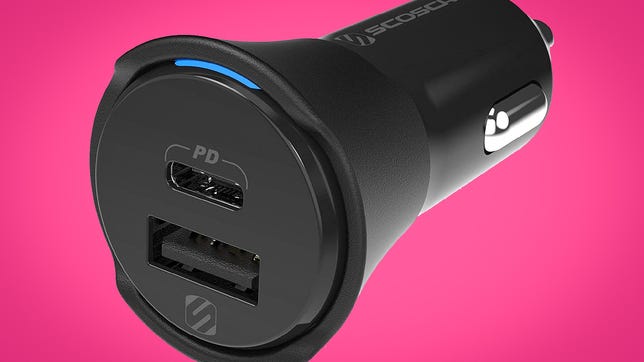
Scosche/CNET
Cars have come with USB plugs for years now, but you’ve probably noticed they don’t recharge your phone very quickly. Some do, in which case you can probably ignore this gadget. If yours doesn’t, or if you have more devices than charge ports, consider a separate USB plug for your “cigarette lighter” outlet. The better ones, like the Anker PowerDrive Speed Plus and Scosche CPDCA38 can output enough power to rapidly charge your devices. I’ve had an older, slower version of the latter and it’s worked great for years.
If your car has Android or Apple Auto, these typically require a physical connection between the car and the phone, which precludes the use of a cigarette adapter.
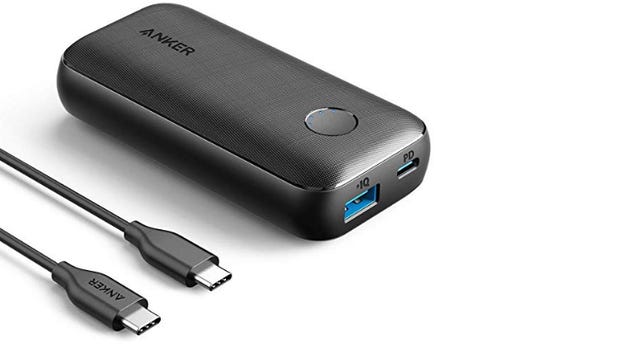
Amazon
This isn’t strictly a “road” essential, but I recommend one for any kind of travel. A reasonably-sized USB battery, say 10,000 mAh or so, that can fast charge your phone or other devices can be handy in many situations and a lifesaver in others.
There are infinite sizes, shapes and colors. I don’t recommend the smallest ones because they’re more for emergencies and usually only give you a partial charge. I also don’t recommend really massive ones as they’re just heavy to lug around. A 10,000-mAh battery can charge your phone from empty multiple times. There’s no “perfect” size, but it’s worth starting there to figure out what you need.
I’ve traveled with various batteries for years. My current pick is the Anker PowerCore 10000 PD Redux because it’s small, but has high capacity and charges my phone rapidly via USB-C.

Windex/CNET
These were the MVP of my road trip last year: They’re wet wipes, but for windows. Why are they on a list of essentials? Because there’s only so much windshield wipers can do: Some bugs and grime are just too much for them to handle. These work great on even the most gruesome bug guts.
The package is resealable too, so you can keep them tucked beside your seat for when they’re needed.
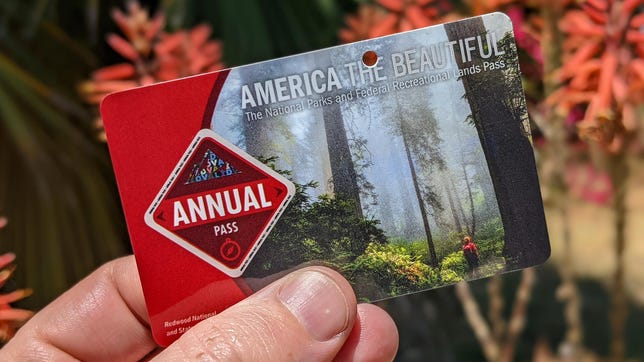
Geoffrey Morrison/CNET
The majority of Americans live within a road trip’s distance of at least one national park, often several. No matter where your road trip is headed, check if it passes near one. They’re all good and worth a visit.
Some are free, but most have an entry fee around $30 or so. Or you can get the annual National Park pass, also called the America the Beautiful or Interagency pass. This gets you in over 2,000 federal lands. Three visits to any park should let it pay for itself.
You can get them at the park’s entrance or on the USGS and REI websites.
If you are considering visiting a national park this year, check out top tips for visiting them.

Hope for the best, plan for the worst? If you have room for it, some kind of roadside emergency kit is probably a good idea. I say “probably” since the better option for most people is a AAA membership, so your phone and a USB battery pack will keep you covered. I mean, does your car even have a spare tire? Mine doesn’t. It comes with wishful thinking and a phone number.
But it’s possible your adventure will take you away from cell coverage, and that’s a bad place to get a flat or have a breakdown. The Lifeline kit linked here is decent, for what it is. To be honest, though, I’m not sure how useful these really are. None of the items in this kit are a bad idea, per se, but will you use them even if you do break down? You can get a first aid kit separately (and you should). Same for a tire inflator. But is there anyone out there that knows enough about car repair to need a crappy screwdriver and wrench set? If so, wouldn’t they already have quality tools? Do you know how to safely connect jumper cables so you don’t accidentally blow up a car battery? If you said “positive to positive, negative to negative,” don’t buy jumper cables. Call for help.
So yeah, I feel like a USB battery pack and a AAA membership are far more useful for most people for most road trips. But hey, if you know you’re going to be driving into the unknown, it’s worth considering… but if you’re that advanced I’d assume you already have the right gear.
If you want some other options, check out our best emergency kits for cars.
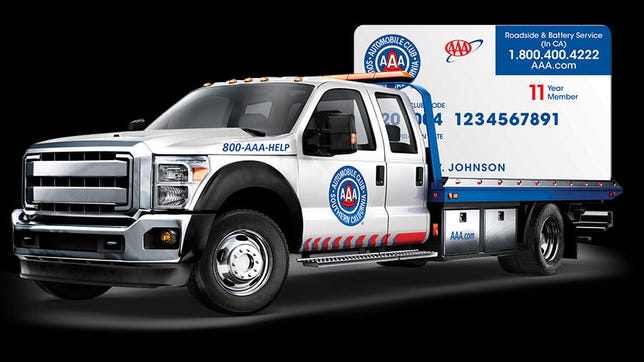
AAA
There’s one annual bill that’s permanently on my “always renew” list: my AAA membership. I’ve only had to use it a handful of times, but it’s a peace of mind that’s easily worth its cost. And it’s not even that expensive. Get towed once and you’ve paid for your membership for several years.
And it’s not just towing. They’ll help you change a flat, give your car a jump and more. This is a no-brainer.
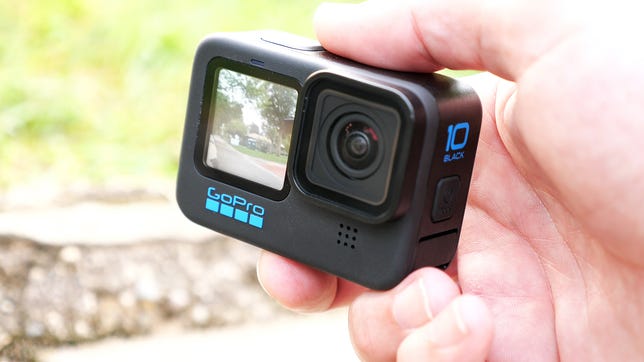
There are a ton of choices for cameras, and for most people I’d actually say your phone is fine. An expensive camera isn’t going to take better pictures if you don’t know how to use it. Also, you can take great photos with your phone.
If you have an older phone or want something more for rugged travel, a GoPro can take great photos and videos and doesn’t cost a ton. The Hero 9 and 10 are very similar, though the 10 is a little easier to use as it has a faster processor. I used the 9 on my trip last year, and the 10 on my trip this year, and the 10 annoyed me way less and didn’t lock up as much.
I actually did a whole article about this topic: Best Camera Gear for Your Next Road Trip.

Geoff Morrison/CNET
This is a bit tricky as your car and needs are probably different from mine. If you do get a GoPro, having somewhere to mount it in the car can get you some epic shots. There are a bunch of options. A suction cup mount is a good place to start. I like this one as it’s inexpensive, but can pivot and swivel in just about any direction.
I also have an antenna mount I like a lot. You can see it with a long selfie stick attached with a 360 camera on top in the image above. It’s from CravenSpeed and for the Miata, but they might have a version that fits your car.
As well as covering TV and other display tech, Geoff does photo tours of cool museums and locations around the world, including nuclear submarines, massive aircraft carriers, medieval castles, epic 10,000 mile road trips, and more. Check out Tech Treks for all his tours and adventures.
He wrote a bestselling sci-fi novel about city-size submarines, along with a sequel. You can follow his adventures on Instagram and his YouTube channel.